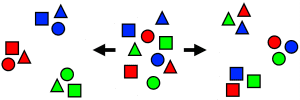As we continue to enjoy the summer season, we may find ourselves joining some activity-based group. Perhaps you have joined a hiking club, or a biking group. Maybe you’re into rowing the river or joining a yacht club. Whatever your interests may be, you have likely sought out a group of people with whom you can interact and enjoy that activity. People with similar interests often tend to socialize with each other.
In a similar way, the European Chemicals Agency (ECHA) is trying to find the most efficient way to manage chemical risk through an Integrated Regulatory Strategy. Since 2019, they have moved away from looking at substances one-by-one to assessing them in groups. By grouping the chemicals with others of similar chemical structure, they are assuming that the hazards will also be similar. The strategy aims to accelerate data generation, identify groups of substances of concern, and determine regulatory action on them. This procedure has allowed them to assess more than 3,000 substances in 120 groups. It also avoids the risk that companies will replace a hazardous chemical with another that has a similar hazard.
As Europe leads the way using this strategy, other countries may soon follow suit. While I understand their reasoning for approaching it in this manner, it becomes more of a burden on companies to fully understand their compositions. In the past, you could check your composition by the Chemical Abstracts Service (CAS) registry numbers against a banned or restricted list consisting of chemical substances. This procedure may no longer work and becomes more cumbersome if the trend moves toward groupings.
If you need assistance in reviewing your compositions against banned and restricted lists, whether or not they contain groupings, contact us at Strategic Realm Consulting. We can assist you in this process.


